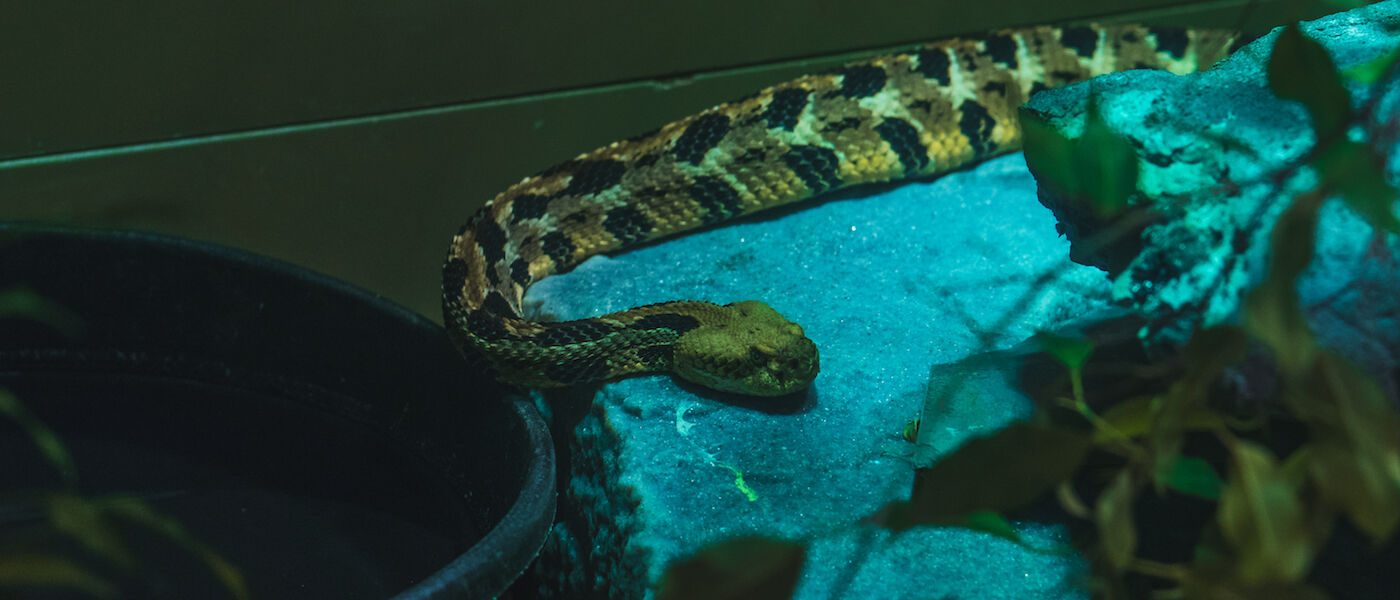LSC's newest resident: the timber rattlesnake!
Slither your way over to Liberty Science Center and meet our scaliest new resident: the timber rattlesnake, now residing in our Eat and Be Eaten exhibition.
The timber rattlesnake is a fascinating reptile, best known for – you guessed it – the rattle it makes. When threatened, rattlesnakes vibrate their tails, making a buzzing sound that acts as a warning signal to predators.
Timber rattlesnakes are also venomous, and one of two venomous snakes in New Jersey (the other being the northern copperhead). But there is actually a greater chance of being struck by lightning than of being bitten by either one of these snakes. There have been no reported deaths due to timber rattlesnake bites in NJ.
Like other snakes, rattlesnakes will rarely bite without being provoked and usually only in self defense. If given the opportunity, they will attempt to escape first.

Here are a few fast facts about timber rattlesnakes:
- They can be found in many different parts of the country, including parts of Minnesota, New Hampshire, Texas, and Florida. Here in New Jersey, they can be found in the Kittatinny Ridge, the northernmost portion of the Highlands, and the Pine Barrens.
- They are a front fanged venomous snake, with their fangs located on the upper jaw.
- Scientists believe rattlesnake venom can be used for medical purposes. For example, thinning blood – a side effect of the venom – can help reduce high blood pressure. Scientists are also investigating compounds in rattlesnake venom that might lead to treatments for nerve diseases, infectious diseases, and vision disorders.
- During the winter, they brumate to escape the cold. Brumation is similar to hibernation, but involves different metabolic processes, allowing the animal to be mostly asleep but still capable of occasional activity, such as waking up to drink water.
- Their diet include animals such as shrews, moles, chipmunks, squirrels, and small rabbits.
- They are primarily nocturnal. Peak activity is seen during very dark nights with a new moon.
- Timber rattlesnakes have been endangered in NJ since 1979. They are protected under the the NJ Endangered Species Act. Therefore, it is illegal to kill, handle, harass or collect a timber rattlesnake in our state.
- In New Jersey, the primary threats to timber rattlesnakes come from human-related factors. These include malicious killing, illegal collecting, human encroachment into rattlesnake range, and behavioral disturbance by people.
